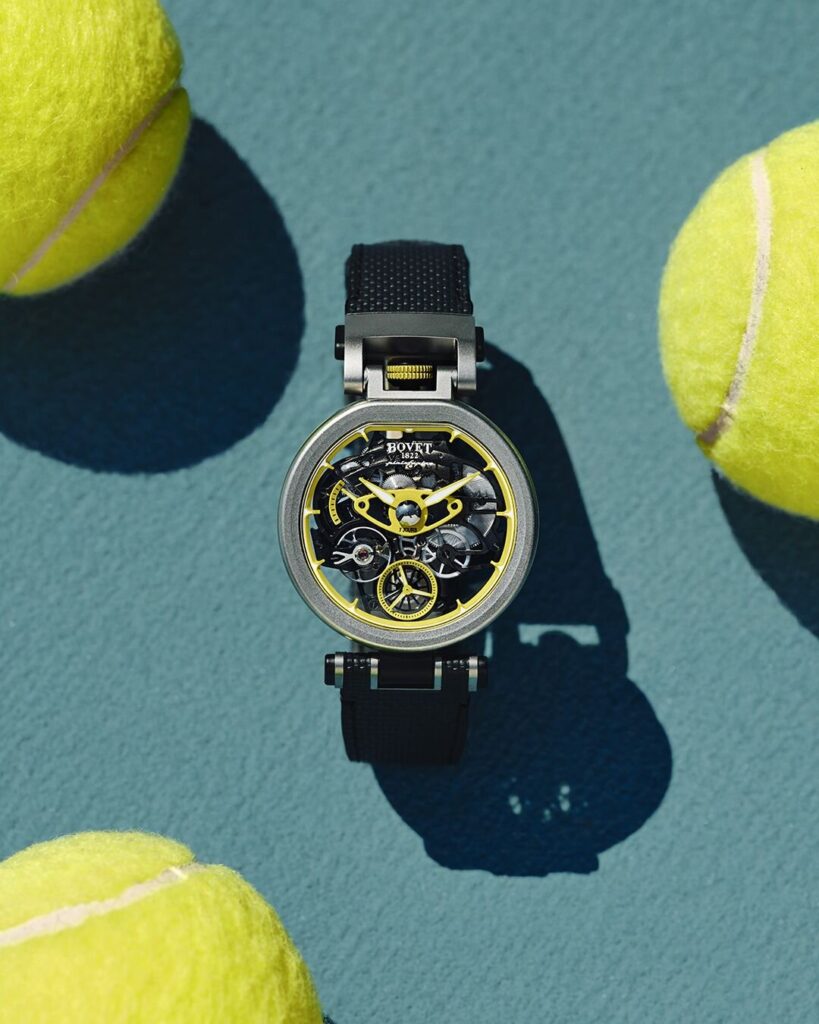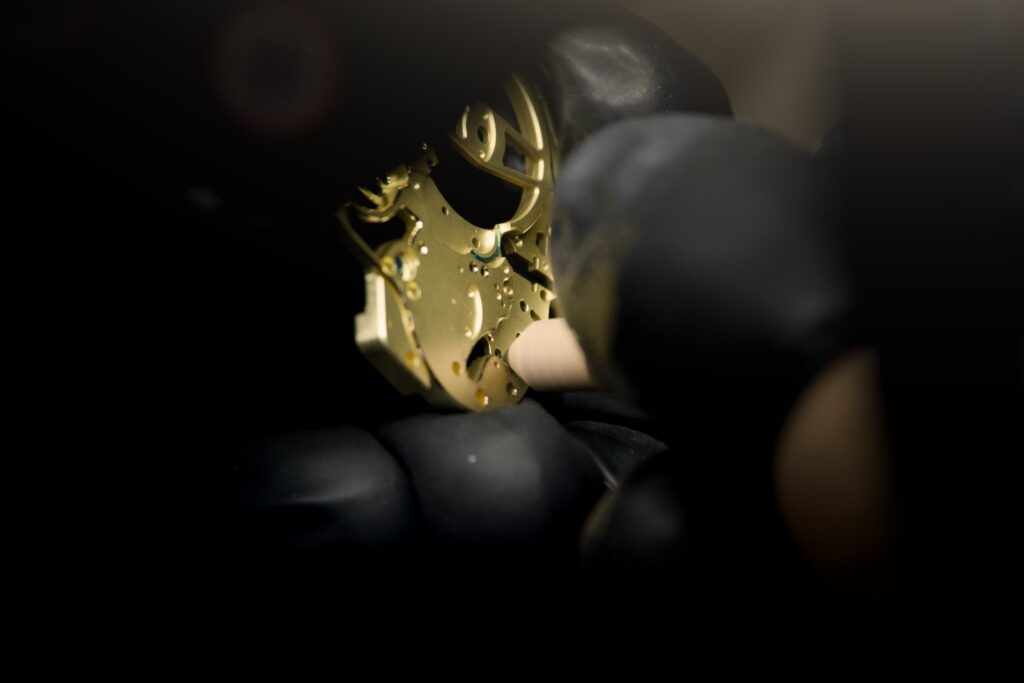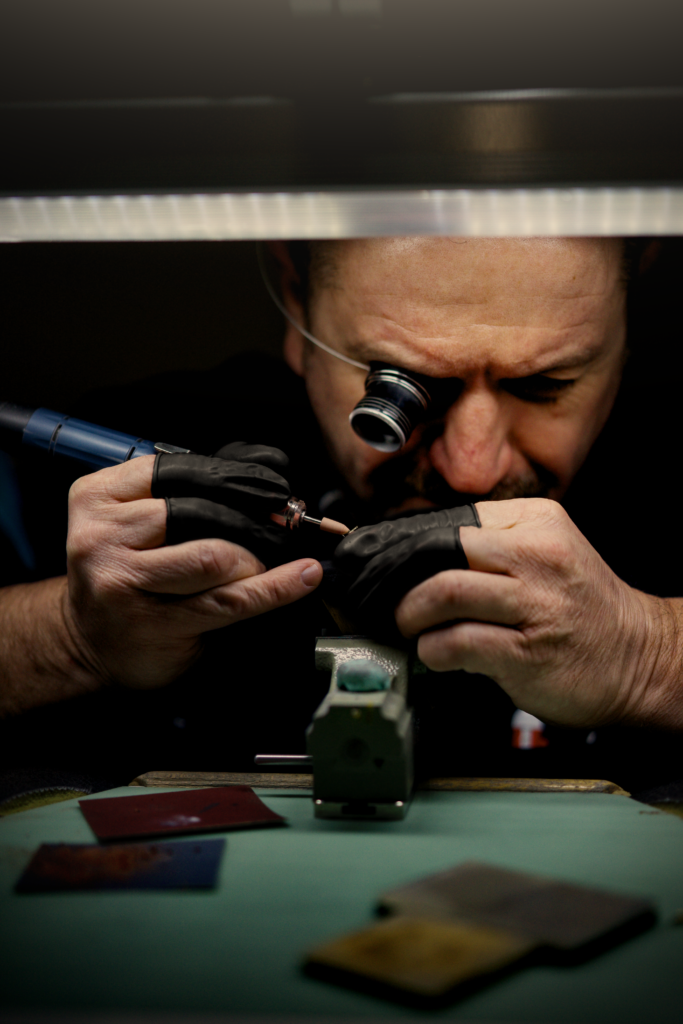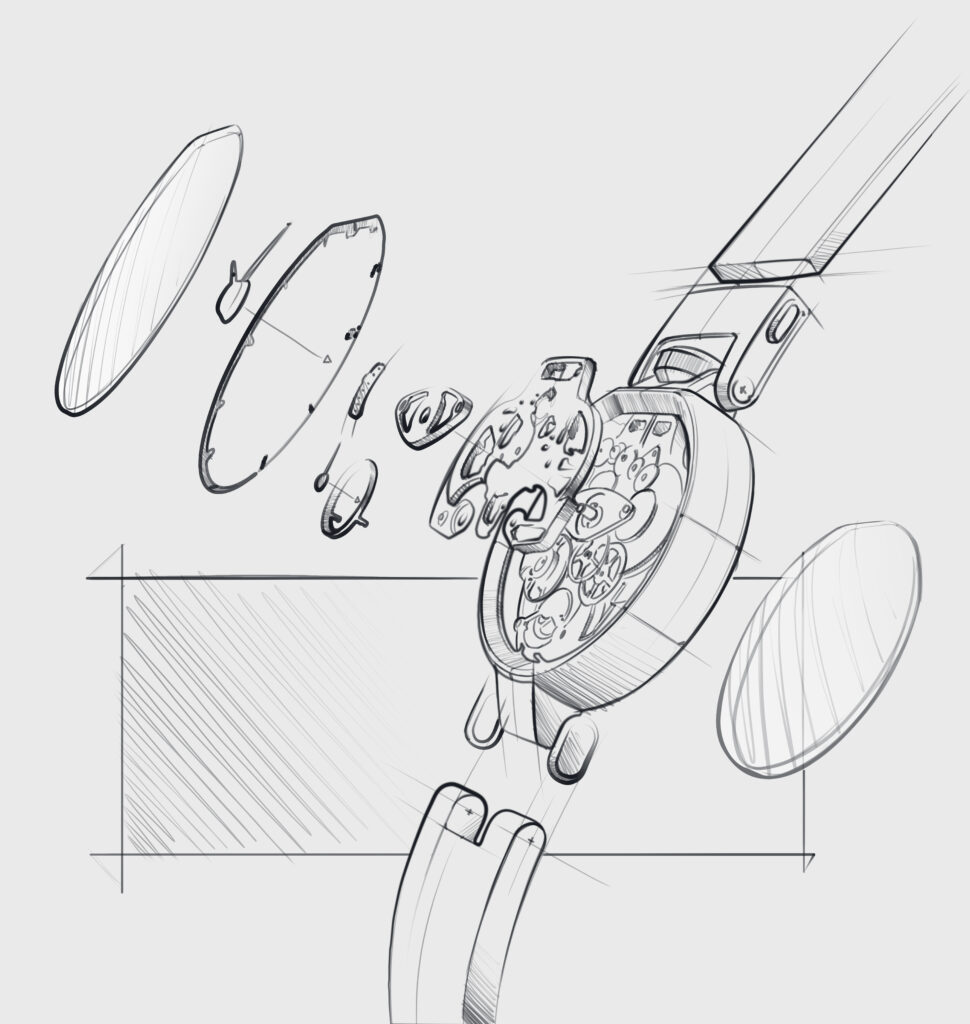We all love a good watch, right? Whether it’s the feel of a perfectly crafted timepiece on your wrist or the way it catches the light just right, there’s something undeniably special about them. But have you ever wondered what goes into designing and crafting these incredible pieces of art? Well, you’re in for a treat! In this interview, we’re pulling back the curtain on the design magic behind one of the most exciting collaborations in the world of luxury watches—the Bovet x Pininfarina Aperto 1. We sat down with one of Pininfarina’s top designer Cicare Hugo to explore the creativity, craftsmanship, and innovation that brought this remarkable watch to life. Spoiler: It’s more than just gears and dials—it’s pure artistry!
Hi Hugo! Can you share the creative process and the design philosophy behind the Bovet x Pininfarina Aperto 1?
Absolutely! The Aperto 1 is the culmination of a longstanding collaboration between Pininfarina and Bovet, which began nearly 15 years ago. During this time, we’ve worked together on several timepieces, including the Ottanta series, Batista, and two chronographs. The Aperto 1 represents what we refer to as the “new generation” of our collaborative efforts. We call it a new generation because it’s a reimagined timepiece that belongs to the tourbillon family from a design perspective but without the traditional tourbillon mechanism. This departure from convention allowed us greater creative freedom to explore new design directions while still staying true to the timeless elegance Bovet is renowned for.
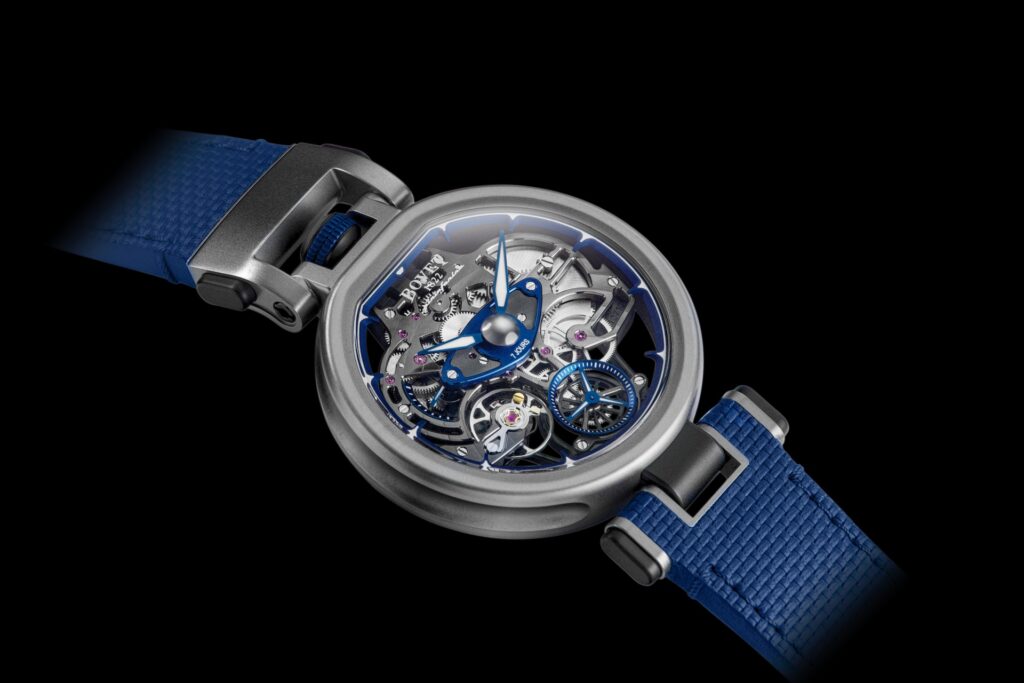
Our collaboration always begins by understanding the brand’s DNA, which, in Bovet’s case, is deeply rooted in tradition and craftsmanship, particularly in high-precision movements. As designers, we aimed to honour that heritage while pushing the boundaries of what a modern timepiece can embody. The focus was on creating something that appeals not only to collectors but also to anyone who appreciates the beauty of engineering. Every element of the design—from the exposed mechanisms to the materials used—was thoughtfully chosen to tell a story of precision, transparency, and innovation.
That’s interesting! Can you explain how you approached the initial design phase of the Aperto One?
The initial phase of any project is about distilling the core concept. For Aperto 1, we began by creating a detailed mood board to help us visualize the key elements we wanted to highlight. From the outset, visibility became the primary focus. We aimed to expose the inner geometry of the timepiece in a way that not only celebrated its mechanical complexity but also allowed the user to fully appreciate the craftsmanship.
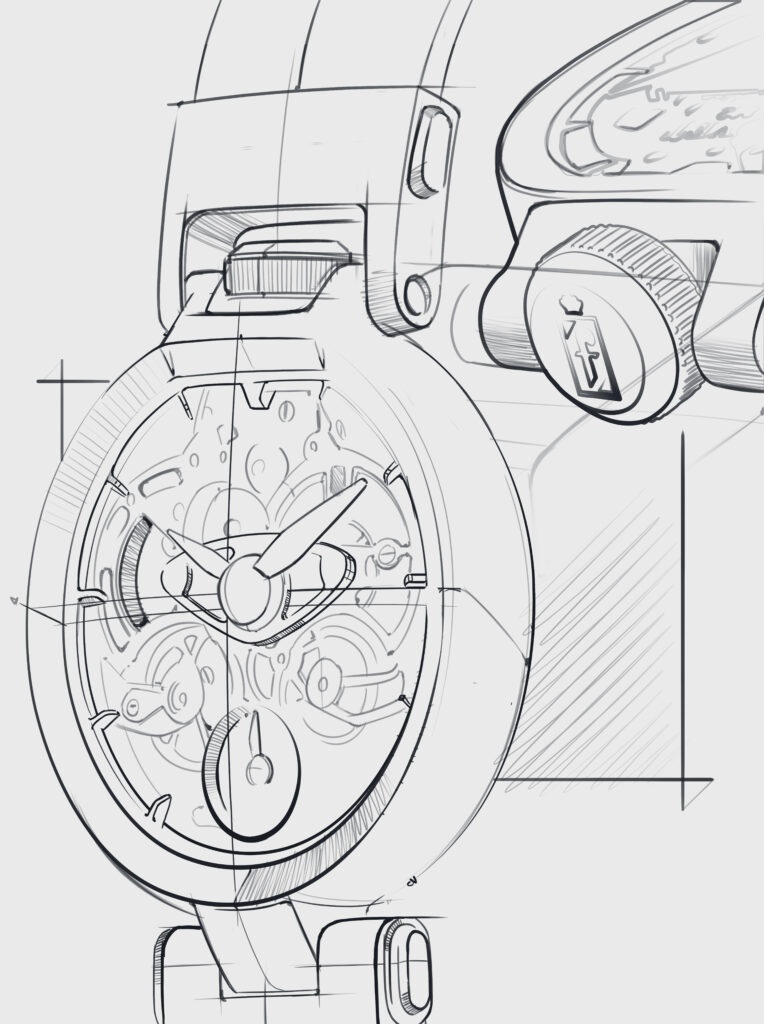
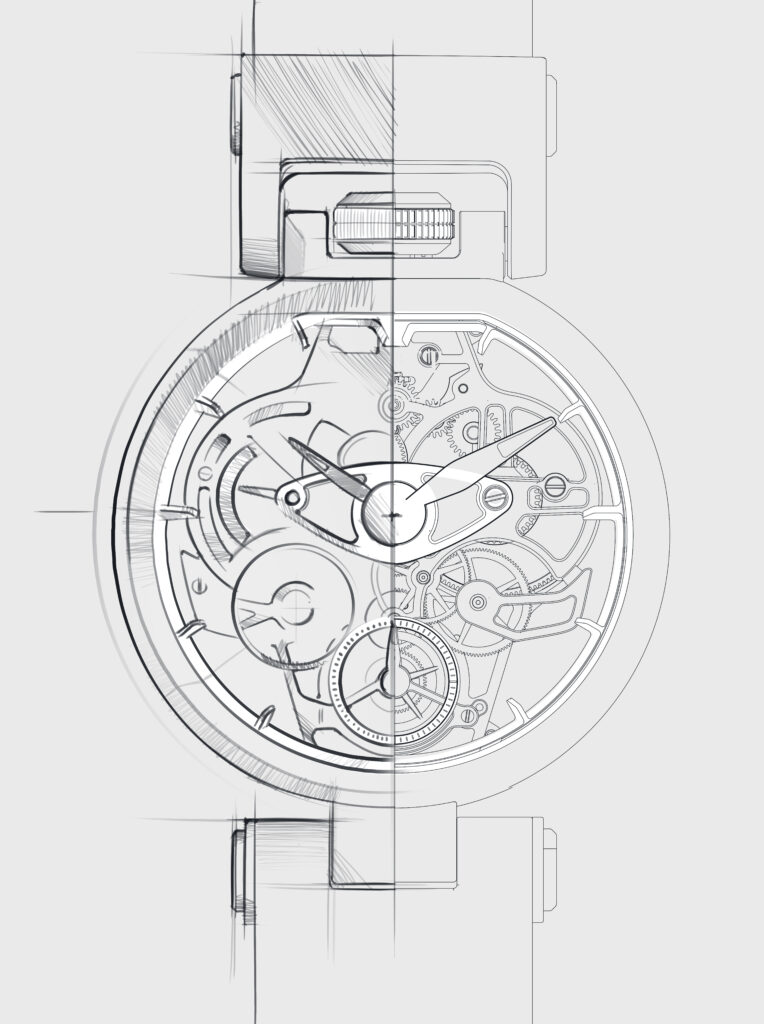
In many ways, we drew a strong parallel with the aviation industry, where visibility is critical for both safety and performance. The same principle applies to a luxury timepiece like the Aperto 1—it’s not just about telling time, but about showcasing every gear, spring, and mechanism, much like peering into the cockpit of an aircraft. The mechanical intricacies are the true heroes of this piece, and we designed it so that nothing is hidden. Every detail is meant to be seen and admired.
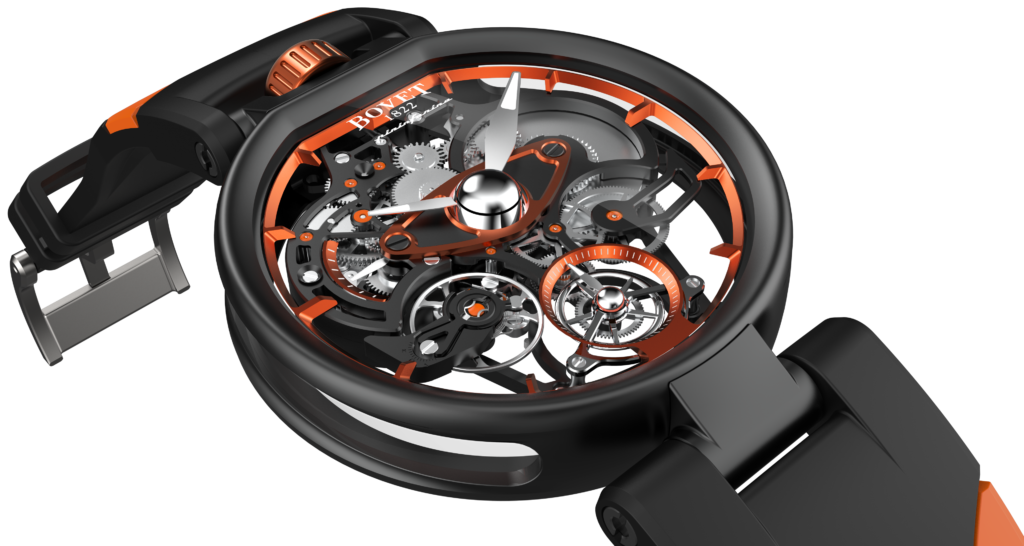
From a technical standpoint, we began by developing preliminary 3D models and experimenting with the positioning of key components like the wheels and the mechanism. We then refined the design step by step, ensuring that the core concepts of “transparency” and “visibility” were preserved throughout the process. In fact, the final product closely resembles the early sketches and 3D models, reflecting the clarity of our vision from the very beginning.
The aviation inspiration is quite unique! How did that influence specific aspects of the design?
Aviation is a rich source of inspiration, particularly at the intersection of engineering and aesthetics. In aviation, two things are absolutely crucial: visibility and weight reduction. Just as a pilot needs an unobstructed view from the cockpit, the wearer of the Aperto 1 should have a clear view of the watch’s inner geometries. Similarly, as aircraft engineers strive to reduce weight to enhance performance, we focused on making the watch as lightweight as possible without compromising its structural integrity.

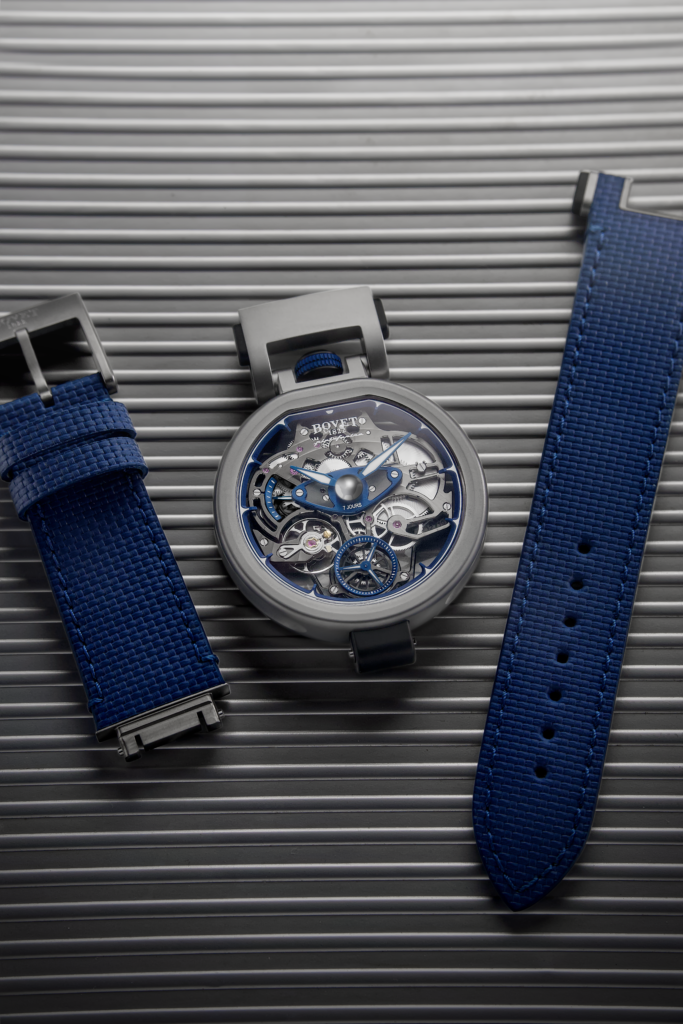
Weight reduction played a pivotal role in our choice of materials. We selected titanium for the case because of its exceptional strength-to-weight ratio, which is also why it’s widely used in aircraft manufacturing. Additionally, the design of the watch incorporates hollowed-out components where material isn’t structurally necessary, much like the construction of an aircraft. The concept of removing excess material while maintaining the core structure became a guiding principle throughout the design process.
Exposing the intricate mechanics while maintaining the elegance of the watch must have been a real challenge. How did you balance complexity with design?
You’re absolutely right, it was a significant challenge. The complexity of the movement inside the Aperto 1 is truly astounding. In fact, I’d estimate that around 70% of the work goes into the internal mechanisms rather than the outer case. This is where our close collaboration with Bovet played a crucial role. They are experts in movement design, and our task was to enhance their craftsmanship by creating a case that showcases their work in the best possible way. The open-geometry design, or skeletonization, was essential in achieving this. We didn’t want to hide anything—our goal was to design a piece where every intricate detail could be admired. At the same time, we needed to ensure that the overall design remained balanced and elegant, avoiding a cluttered or overly complicated look.
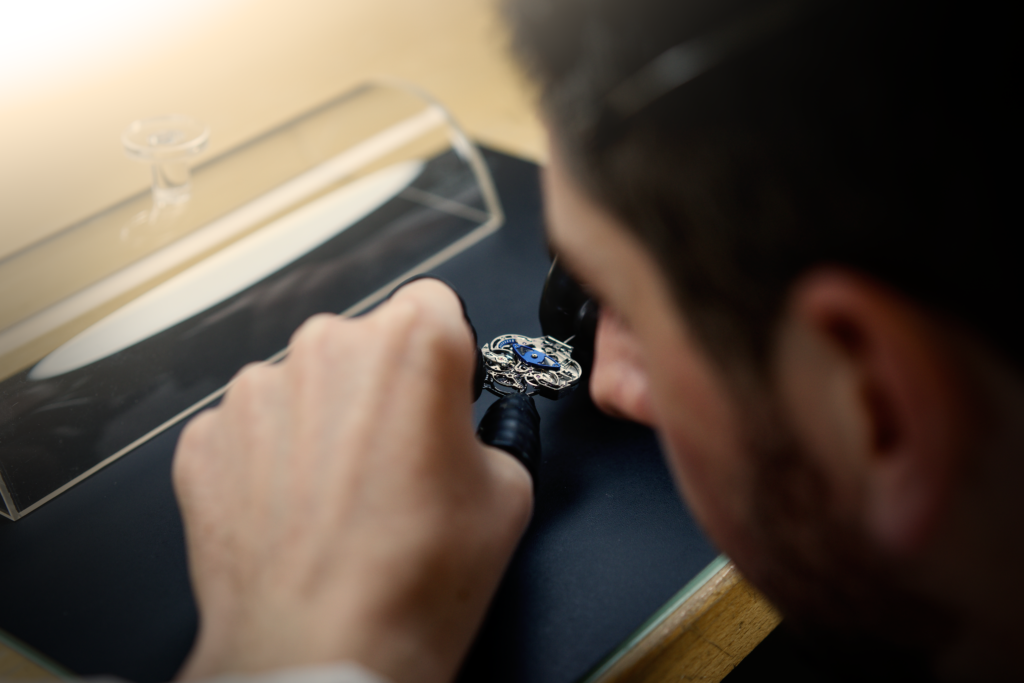
We achieved this by focusing on clean lines and creating symmetry within the exposed mechanisms. For example, the placement of the dial elements was carefully designed to complement the movement rather than distract from it. Each exposed component was meticulously crafted, not only for its functionality but also for its aesthetic contribution, ensuring it aligns with the overall visual harmony of the watch.
The choice of materials and colours also seems to play a significant role in the design. Could you tell us more about that?
Material selection was a critical aspect of the design process. From the outset, we knew we wanted to work with titanium due to its strength, lightweight properties, and resistance to corrosion. Titanium also has a modern, industrial aesthetic that complements the mechanical focus of the watch. For the sapphire crystal, we chose it for its unrivalled clarity, allowing the wearer to fully appreciate the exposed movement. However, working with sapphire is challenging due to its hardness, and incorporating it into both the front and back of the watch requires precise engineering. But the result was worth it—the transparency is flawless, giving the watch the feel of a piece of high-tech machinery.

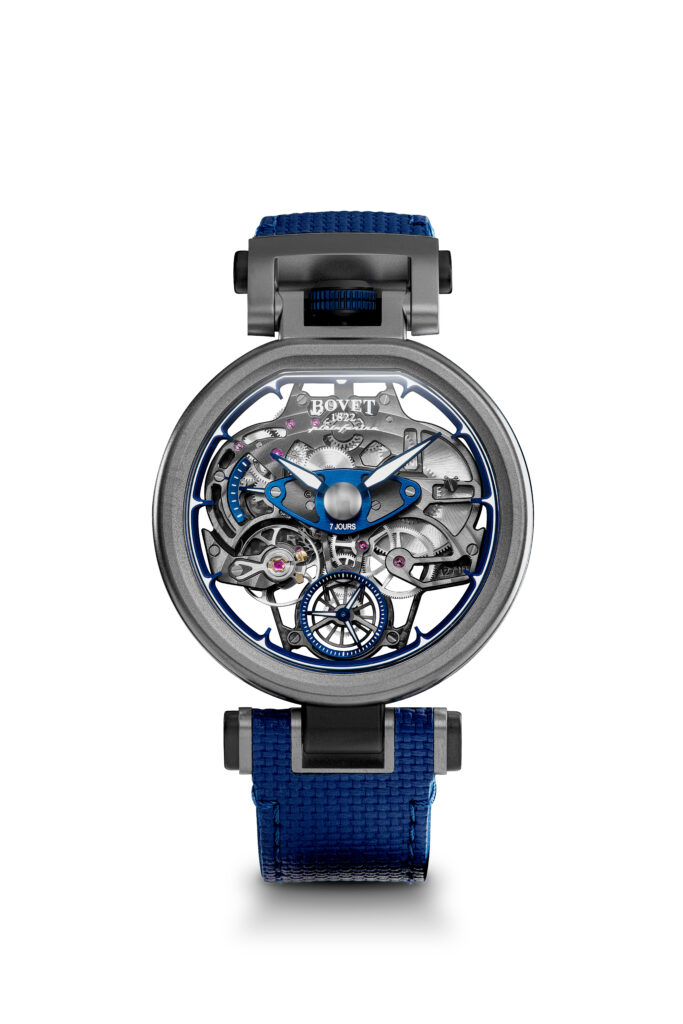
In terms of colour, we opted for blue accents throughout the design. Blue is strongly tied to Pininfarina’s design heritage, so it felt natural to incorporate it into this timepiece. Beyond that, blue adds a sporty, dynamic quality to the watch. The contrast between the blue hands and elements against the metallic tones of the movement creates a striking visual effect, imbuing the piece with a modern, youthful energy. This colour palette helps balance traditional craftsmanship with a more contemporary look.
How do practicality and consumer preferences influence the overall design of the watch?
Designing a luxury timepiece is always a delicate balance between tradition and modernity. While we stay aware of trends and consumer preferences, particularly regarding materials and colours, timepieces like the Aperto 1 cater to a highly discerning audience. These are often collectors—individuals who understand and appreciate the technical mastery behind each watch. So, while we certainly aim for the watch to feel relevant to modern tastes, we also need to ensure that it remains timeless.
For instance, although the watch features contemporary elements like blue accents and lightweight materials, the design still respects traditional watchmaking principles. That’s why we avoided making it overly flashy or trendy. The focus remains on the mechanical beauty of the movement and the craftsmanship—elements that transcend trends. So yes, consumer preferences matter, but our design philosophy was always centred on creating something that would stand the test of time, both aesthetically and technically.
That makes sense. Are there any design details in the Aperto 1 that often go unnoticed but hold significant value?
Yes, there are several subtle details that collectors and enthusiasts tend to appreciate. One example is the small dial on the back of the watch, which mirrors the central theme on the front. It’s a subtle feature, but it adds symmetry and refinement to the overall design. Another example is the finishing techniques, such as the ‘Côte de Genève’ pattern on certain movement components, which introduce both tradition and visual richness to the timepiece. Collectors often focus on these intricate details, and while they may go unnoticed by some, they significantly enhance the watch’s overall quality and storytelling.

How would you describe the emotional or experiential impact that the team hopes to achieve with this watch?
From an emotional standpoint, the Aperto 1 is designed to evoke a sense of wonder and admiration for the mechanical beauty within. It’s not just a watch—it’s an experience. The transparency of the design, where every gear and spring is visible in motion, creates a connection between the wearer and the timepiece. There’s something deeply satisfying about observing a precision mechanism in action, knowing that each component has been meticulously crafted by hand.

We wanted the wearer to feel as though they’re not simply checking the time but interacting with a piece of functional art. There’s an emotional resonance that comes from understanding the level of craftsmanship and care that went into creating the watch. It’s designed to inspire pride in owning something truly unique—something that not only tells time but also tells a story of engineering excellence.
With such a long-standing partnership, how did the collaboration between Pininfarina and Bovet shape the outcome of the Aperto 1?
The collaboration between Pininfarina and Bovet has always been a deeply synergistic relationship. At Pininfarina, we bring a modern, forward-thinking design approach, while Bovet carries centuries of expertise in traditional watchmaking. Over the years, we’ve learned to combine these strengths in a way that enhances both brands.
The Aperto 1 is perhaps the best representation of this partnership, as it perfectly balances Bovet’s heritage with our modern design sensibilities. What makes this collaboration special is that it’s not just about creating a beautiful object—it’s about pushing boundaries together. Bovet has been incredibly open to innovation, and we’ve worked closely with their technical team to ensure the design is not only aesthetically pleasing but also mechanically sound. We’ve developed a mutual respect for each other’s expertise, and that’s what has allowed us to create something as unique as the Aperto 1.
How does designing a watch differ from designing other products in your studio?
Designing a watch is very different from designing other products, though there are some similarities in the design process itself. Watches are incredibly intricate, both mechanically and aesthetically, which makes the process more technical and detail-oriented. The timeline for developing a timepiece is also much longer due to the complexity of the movements and the craftsmanship involved. We approach watch design using the same methodology we apply to other products, but with an even greater emphasis on precision.
The process begins with research and exploration, followed by concept sketches and 3D modelling. From there, we move into prototyping and refinement, ensuring that every detail is perfect before production begins. However, because watches are such personal items—often seen as expressions of one’s identity—there’s an emotional connection we aim to build into the design.
Creating a watch like the Aperto 1 also involves extensive collaboration with experts from various fields, such as movement engineers and artisans, making it a truly multidisciplinary process. Every component must work in harmony, and this requires a level of attention to detail that is unique to watchmaking.
Gallery
